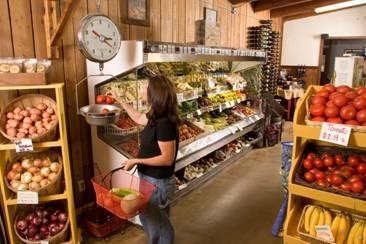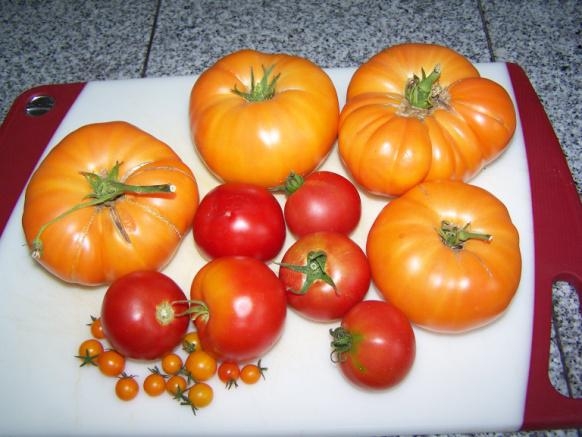Eating Local
The tree has been dismantled, the ornaments packed away, and the Christmas sweater you have worn too often lately is now hiding in the closet. It has been a season of too many cookies, candies, and holiday parties. Welcome to the new year, a time to ring out the old and a chance for a fresh start with resolutions that are all shiny and new. If your list of resolutions is looking a little tired, vague and uninspired, perhaps a family goal of either growing and harvesting your own vegetables or buying locally will be an investment in a healthy lifestyle change.
Talk of local food is everywhere. For food purists, “local” is the new “organic.” Local foods are produced as close to home as possible. “Locavore” is a term that was coined in 2005 to describe people who value local as their primary food criterion. The local food movement can start in your own backyard, school, community farm, or simply by purchasing from farmers' markets. Slow Food USA is a grass roots movement with a vision of eating food that is good for you, the planet, and those who grow it. It is everything that fast food is not. Local chapters offer educational activities in their communities to promote sustainability and biodiversity. A developing local chapter of Slow Food Lodi has a goal of educating residents of San Joaquin County to the virtues and pleasures of locally produced food and drink.
Where does one begin? One easy way to start buying local is to choose one product to focus on. Vegetables are often a good place to start. Produce offers a good lesson towards eating food grown seasonally and that translates to local. Eating seasonal foods allows us to eat them at their peak of taste and ripeness. Locally grown has the benefit of freshness, nutritional value, and often costs less. Local and home-grown produce does not have transit time and has not been cold stored. Eating local generates income for our local economy, thereby supporting family farms, utilizing community services, and employing local workers. Small, local farms are run by farmers who live on their land, working hard at becoming good stewards while reducing environmental impacts created by industrial farming practices. Another bonus of purchasing local is that it allows local farmers to try new crops for niche markets that would never make it to big supermarkets.
The concept of sustainability includes buying food grown locally but buying local food does not always guarantee sustainable food practices. Pesticides, chemical fertilizers, hormone, and antibiotic use can all be involved in the local production of foods. When you purchase local, ask what you are buying. A consideration may be that you purchase from farmers using sustainable methods. As master gardeners, we endorse the use of integrated pest management-- IPM practices-- which utilize pest identification, use of beneficials, biological and cultural controls, and finally, only utilize synthetic chemicals as a last resort. Consider these practices of fruit and vegetable gardening in your own home sustainable production. Unlike organic standards which are defined by legal standards, “local” can mean different things to different people. Local does not necessarily mean organic. While local is certainly a flexible term, it does support a more sustainable food system because true sustainability goes far beyond the methods used in food production to include every step that brings food from the farm to your plate. The question arises: if you send an organic food halfway around the world before it is eaten (think transportation, processing, and packaging) is it a sustainable practice or good for the planet?
So now that you have made an informed resolution to eat local, buy local and be local, where do you start? To learn even more and make thoughtful choices, you can visit websites such as: Food Print and Slow Food USA. Commit to growing your own very local backyard produce utilizing our local master gardener website for questions/answers and a calendar of events for educational classes. Create your own family and friends “eat local challenge.” There is strength in numbers! Purchase produce from local farms and wineries. Visit local food establishments that endorse the local food movement by both promoting local purchasing and growing of their own fresh seasonal ingredients. These last few months I sought out in my own small community Wine and Roses, Pietros, the Fruit Bowl, and Michael David Café and can attest to the pleasures and culinary delights of eating fresh locally. Finally, make local eating into a family adventure. What does your neighborhood have to offer in support of buying, growing, and eating local foods? It is the knowing part of the story about your food that makes it such a powerful part of the enjoyment of a meal.
Choosing to eat local can definitely make you feel more rooted (no pun intended). So somewhere into this new year when you may begin to waver, perhaps forgetting your purpose, and go the fast route of drive-thru or the trip to the local mega-supermarket, remember the old adage: you are what you eat!